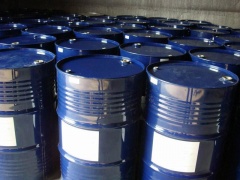Dichlorophenol-2,4
| Infobox on Dichlorophenol-2,4 | |
|---|---|
| Example of Dichlorophenol-2,4 |  |
| Facts | |
| Origin | - |
| Stowage factor (in m3/t) | - |
| Humidity / moisture | - |
| Ventilation | - |
| Risk factors | See text |
Dichlorophenol-2,4
Contents
Description
2,4-Dichlorophenol (2,4-DCP) is a chlorinated derivative of phenol with the molecular formula C6H4Cl2O. 2,4-DCP is used primarily as an intermediate in the preparation of the herbicide 2,4-dichlorophenoxyacetic acid (2,4-D). Annual worldwide production is estimated at 88 million pounds. It is also a photo-degradation product of the common antibacterial and antifungal agent triclosan along with the dioxin 2,8-dichlorodibenzo-p-dioxin.
Liquid (molten) 2,4-DCP is readily absorbed through the skin and contact with large amounts may be fatal. Solid 2,4-DCP does not readily absorb through skin and has a lower NFPA H=3 rating (versus H=4 for molten 2,4-DCP). This is primarily caused by instantaneous renal failure, liver damage and various other organ failure.
Properties; white, low-melting solid with a medicinal odour; boiling point 210°C; melting point 45°C; flashpoint 113°C.
Application
Organic synthesis.
Shipment / Storage
Product is an obnoxious substance and when improperly packed and leaking occurs, the odour/smell will be retained in wooden flooring for many years.
Tests have found traces present 2 years+ after carriage of cargo resulting in claims for taint to subsequent cargo.
May not be carried in Reefer Containers; in dry containers must be in hermetically sealed packages.
Risk factors
For overseas carriage aspects of Chemicals, the readers are recommended to acquire or have access to a good chemical dictionary, and a copy of the International Maritime Dangerous Goods (IMDG) Code, issued by the International Maritime Organisation. Also consult the applicable MSDS sheet.
Environmentally hazardous substance.











